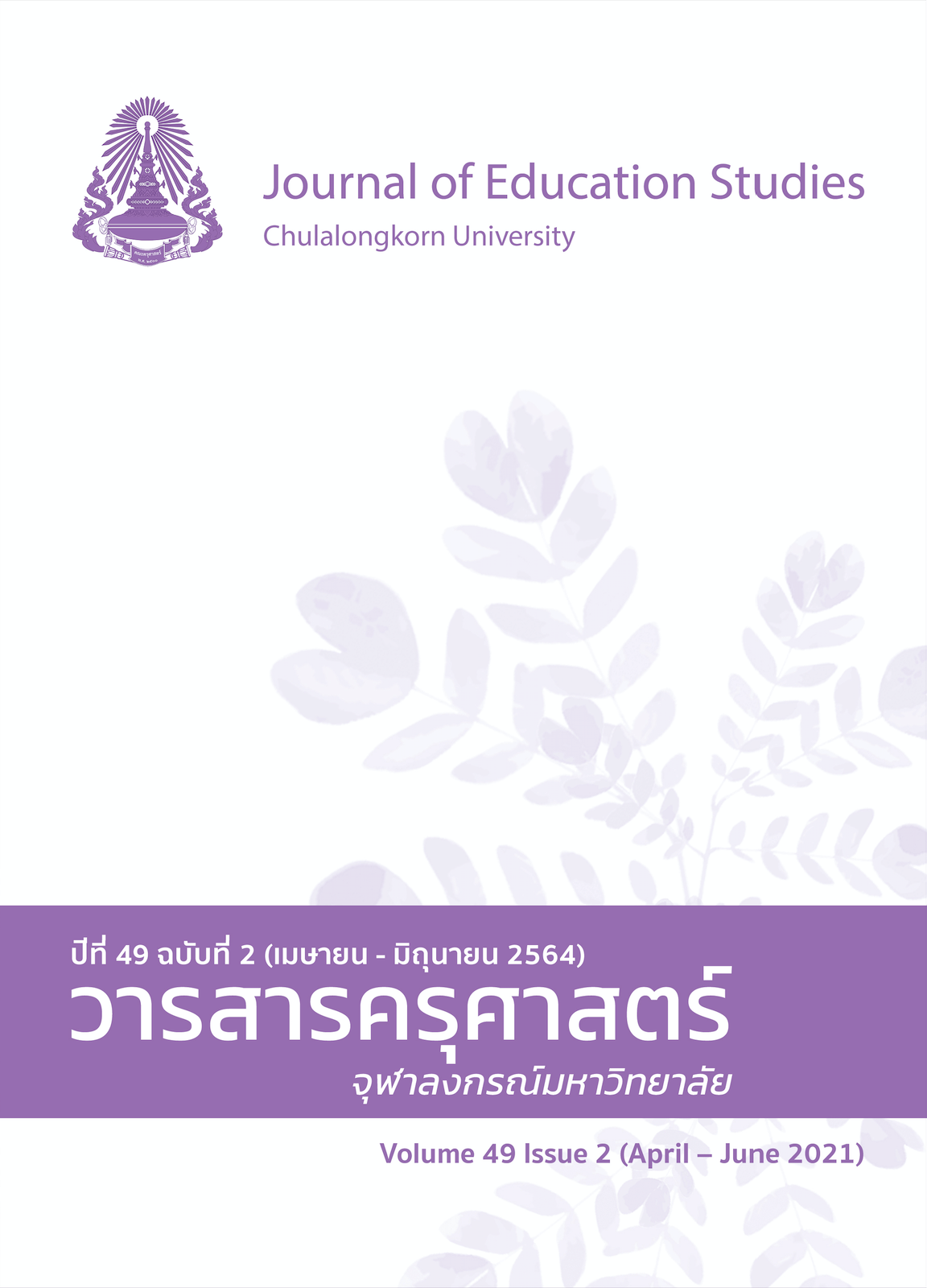The Impacts of Chinese Students’ Thai Cultural Competency in Teaching and Learning in Chiang Mai University
DOI:
https://doi.org/10.14456/educu.2021.33Keywords:
instructional management, satisfaction, comprehension of Thai culture, Chinese studentsAbstract
The purposes of this research were 1) To study the level comprehension of Thai culture by Chinese students 2) To study the different factors including grade, time of residence in Thailand, time spent learning the Thai language, interest in Thai culture, attitude towards Thai culture instruction, interest in Thai culture, and effect of instructional management on the level comprehension regarding Thai Culture 3) To study the level satisfaction of Chinese students with instructional management. The data collection used a questionnaire as the research tool and data was presented in the forms of analyzed frequency, percentage, arithmetic mean, standard deviation, dependent t - t statistics, One-Way ANOVA, and differences between two groups were compared using multiple comparisons with Least Significant Difference (LSD) for assumption testing. The results of this research showed that 1) Chinese students, comprehension of Thai Culture was at the mid–level, with an average score of 3.04. 2) That different factors including grade, time of residence in Thailand, time spent learning Thai language, and interest in Thai culture have an effect on the level comprehension regarding Thai Culture. In addition, different factors including attitude towards Thai culture instruction and interest in Thai culture instructional management have no effect on the level comprehension regarding Thai Culture, and 3) The level of satisfaction of Chinese students with instructional management was at high level, with the average score of 3.67.
References
ยิ่งยง เรืองทอง. (2542). พื้นฐานวัฒนธรรมไทย. คณะมนุษยศาสตร์และสังคมศาสตร์ สถาบันราชภัฏอุบลราชธานี.
วิชัย พยัคฆโส. (2544). ภาษาควรจำ วัฒนธรรมควรรู้. คุรุภาลาตพร้าว.
อารี พันธ์มณี. (2534). จิตวิทยาการเรียนการสอน. ต้นอ้อ.
ภาษาอังกฤษ
A summary of the status quo and trend of the development of Chinese study abroad. (2019, September 7) https://www.iimedia.cn/c1020/74107.html
Bloom, B., (1956). Taxonomy of educational objectives: The classification of educational goals. Handbook: Cognitive domain. Longmans.
Eukeik.ee. (2019, October 25). International students: Opportunities for private university. https://marketeeronline.co/archives/128077
Finocchiaro, M., & Bonomo, M. (1973). The foreign language learner: A guide for teachers. Regents.
Hammerly, H. (1982). Contrastive phonology and error analysis. International Review of Applied Linguistics in Language Teaching, 20(1), 17-32. http://dx.doi.org/10.1515/iral.1982.20.1-4.17
Oberg, k. (1960). Cultural shock: Adjustment to new cultural environments. An International Review, 7(4), 177-182. https://doi.org/10.1177/009182966000700405
Shen, Z. (2002). Teaching cultural for high-level international students. In Teaching Chinese as a foreign language in East China. Shanxi People.
Zhao, G. (2006). The barriers to empathy in intercultural communication. Academic Exchange, (3),167-169.
Downloads
Published
How to Cite
Issue
Section
License

This work is licensed under a Creative Commons Attribution-NonCommercial-NoDerivatives 4.0 International License.




